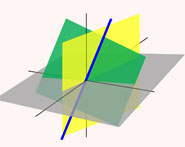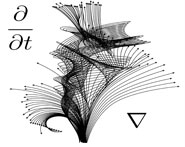


 تاريخ الرياضيات
تاريخ الرياضيات
 الرياضيات في الحضارات المختلفة
الرياضيات في الحضارات المختلفة 
 الرياضيات المتقطعة
الرياضيات المتقطعة
 الجبر
الجبر
 الهندسة
الهندسة 
 المعادلات التفاضلية و التكاملية
المعادلات التفاضلية و التكاملية 
 التحليل
التحليل
 علماء الرياضيات
علماء الرياضيات |
Read More
Date: 5-1-2022
Date: 31-12-2021
Date: 31-12-2021
|
A combinatorial conjecture formulated by Kneser (1955). It states that whenever the 


Lovász (1978) gave a proof based on graph theory. In particular, he showed that the Kneser graph, whose vertices represent the 



An alternate proof was given by Bárány (1978).
Bárány, I. "A Short Proof of Kneser's Conjecture." J. Comb. Th. A 25, 325-326, 1978.
Godsil, C. and Royle, G. Algebraic Graph Theory. New York: Springer-Verlag, p. 160, 2001.
Kneser, M. "Aufgabe 300." Jahresber. Deutsch. Math.-Verein 58, 1955.
Lovász, L. "Kneser's Conjecture, Chromatic Numbers and Homotopy." J. Comb. Th. A 25, 319-324, 1978.



|
|
|
|
التوتر والسرطان.. علماء يحذرون من "صلة خطيرة"
|
|
|
|
|
|
|
مرآة السيارة: مدى دقة عكسها للصورة الصحيحة
|
|
|
|
|
|
|
نحو شراكة وطنية متكاملة.. الأمين العام للعتبة الحسينية يبحث مع وكيل وزارة الخارجية آفاق التعاون المؤسسي
|
|
|